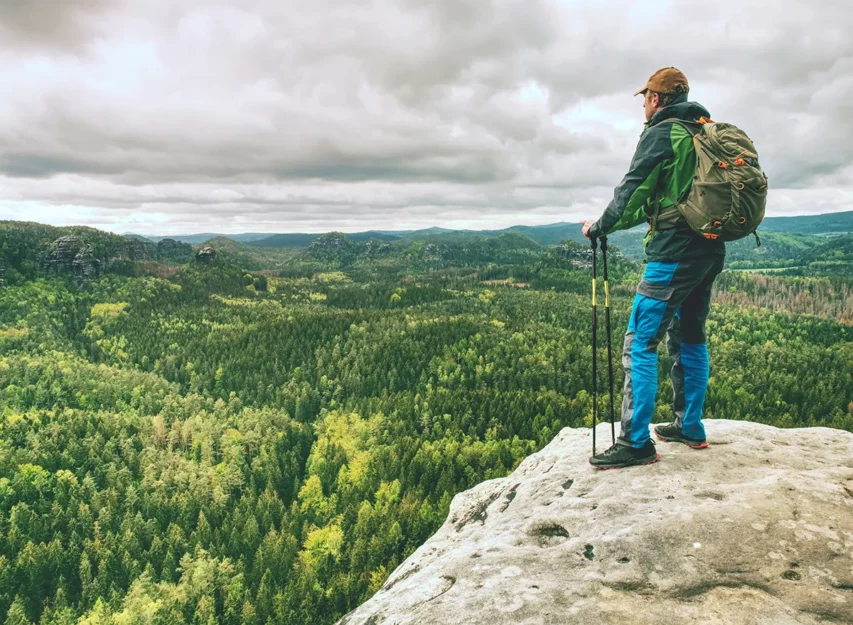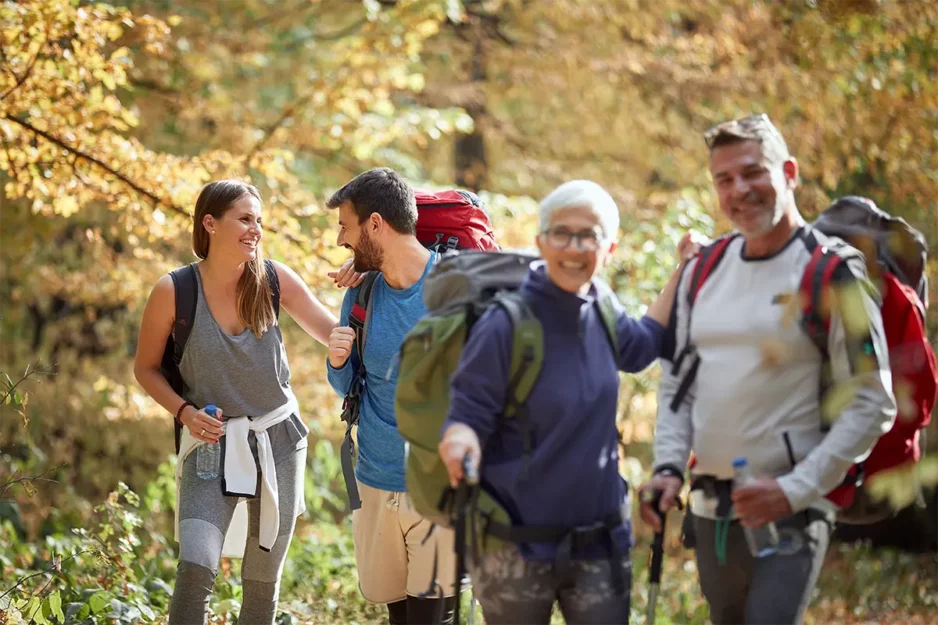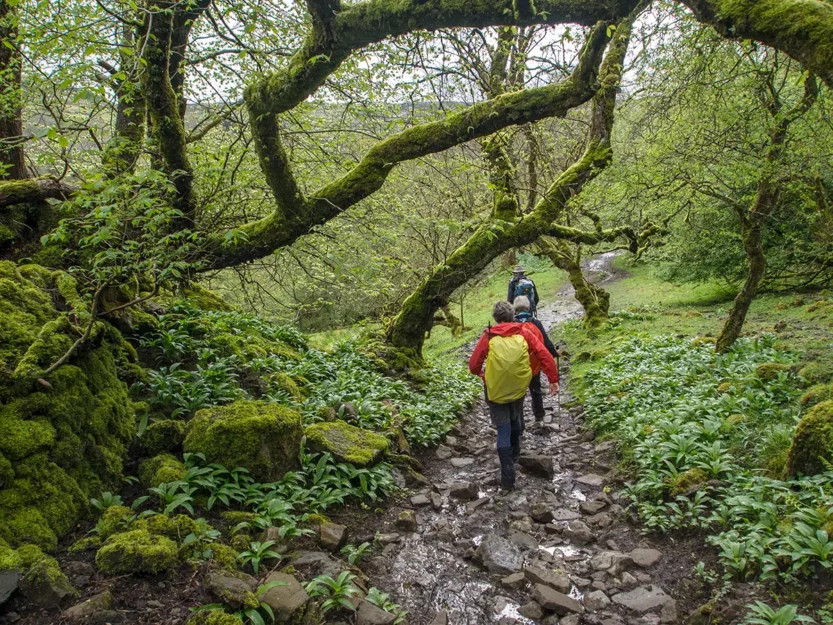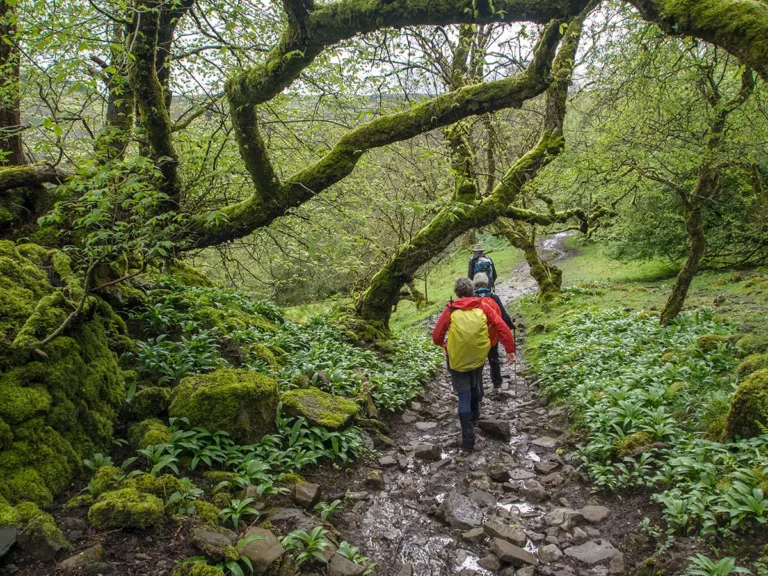Don’t tell the other hiking writers, but I almost exclusively wear trail runners for hiking. The trails I run by my house are the same terrain I hike in Red Rock Canyon and around the Southwest, and if I can run it I can walk it. Only when carrying heavy packs or going on long demanding hikes do I lace up my hiking boots.
So, are trail running shoes good for hiking? Yes, trail runners are excellent for hiking. The grip, comfort, and weight keep you moving along the trails while protecting your feet and keeping blisters away.
But there is a time and place for hiking boots, and trail runners for hiking aren’t always ideal. This article details my experience hiking in trail running shoes and compares hiking shoes vs. trail runners.
Can you hike in trail running shoes?
I’m a sprinter, not a long-distance runner. Growing up playing soccer, baseball, and football, the stop-and-go quick-spurt running style is comfortable for me. The moment you add distance, my knees ache, and the monotony of street running doesn’t give me the drive to keep going.
After a horrible half marathon along the Las Vegas Strip, I started trail running instead.
Dodging rocks and quickly navigating across rough terrain is my jam. And with multiple Tough Mudders and Spartan races completed over the years, trail runners are my go-to shoe.
But you certainly don’t need to run to appreciate a pair of trail running shoes. Trail runners are an incredible hybrid shoe and perfect for day hikes.
Hiking shoes vs. trail runners
Trail runners are a hybrid of running shoes and hiking shoes. Hiking shoes are a hybrid of hiking boots and trail runners.
Hiking shoes are breathable, lightweight, ankle-high shoes with the grip of hiking boots and the lightweight flexibility of trail runners.
Trail runners are breathable, very lightweight, ankle-high shoes. The outsoles range from a less grippy hybrid road and trail outsole to a rugged trail-only sole.
Since trial runners are meant for a quicker pace with agile movements, the grip can differ significantly from hiking shoes. Here’s a visual comparison of the construction of hiking shoes vs. trail runners.




Pros and cons of hiking in trail runners
My pair of Solomon hiking boots have far fewer miles than my Nike trail runners, but they each serve an essential purpose. Trail runners are my casual hikers but on challenging hikes, there’s no replacement for hiking boots.
After years of hiking in trail runners, here’s my list of benefits and disadvantages to trail runners for hiking.
Benefits of hiking in trail runners
For an easy day hike, I would argue trail runners are unbeatable. Here are the significant advantages of trail runners vs. hiking shoes.
Weight
Trail runners are lightweight, providing less stress on your legs along the trail. The weight of most trail runners averages 10 to 11 ounces, while hiking shoes average 1 lb 6 ounces to 2 lbs.
How important is weight? Multiple running shoe studies found for every 3.5 ounces in weight added per shoe, the runner used 1 percent more energy.
Flexibility
Runners need a shoe with flex, and most of our casual daily footwear offers it, too, providing familiarity. Although hiking shoes and many hiking boots offer foam or EVA midsoles, the rigidity of the outsole doesn’t provide the same comfortable flex.
Little to no break-in period
The durability and rigidity of hiking boots mean it can take several hikes to break your boots in. And the same can be said for hiking shoes.
A pair of trail running shoes should be blister free out of the box.
Price
You can undoubtedly find expensive versions of trail runners and hiking shoes, but more cost-effective options exist for trail runners. Expect to pay around $100 for trail runners and $140 for hiking shoes.
Disadvantages of hiking in trail runners
A hiking shoe or boot best works to your advantage when a trail leads you to creek crossings, heavy brush, and steep elevation changes.
Below are the reasons I have multiple footwear options depending on the hike.
Durability
There’s a reason hiking shoes weigh more, and it’s often due to the rigid construction. Opt for hiking shoes vs. trail runners if you plan to put your shoes through continued abuse on rugged trails.
Hiking shoes overlay suede leather or thermoplastic urethane (TPU) over breathable mesh panels to increase stability and durability. They better protect your feet and can take a beating for longer.
Waterproofing
During my desert hikes, I don’t see much rain or cross any creeks. If water resistance or waterproofing is essential where you hike, hiking shoes provide better options to safeguard your feet against wet conditions.
I’ve run miles after being in muddy water on adventure races with my current Nike trail runners and found them to have excellent quick-drying fabrics, but my first pair didn’t make it home after a tough mudder.
Grip
Confidently stepping and pressing off rocks to climb, descend, or navigate rugged trails is vital when hiking. Hiking shoes are made for exactly that.
Trail runners dedicated to off-road will give you the grip needed for many trails, but the hybrid road and trail runners don’t compare. Trail runners are also meant for quickly navigating trails, so the type of grip varies from hiking shoes.
Less cold weather insulation
Trail runners are perfect in mild and hot climates but might leave your feet cold in the winter. The waterproofing and durability of hiking shoes better insulate your feet from cold air and winds.

Purchasing trail runners for hiking
When shopping for trail runners, you’ll notice a mix of brands known for both running shoes and hiking boots. Popular trail runners are made by:
- Brooks
- HOKA
- New Balance
- Nike
- Merrell
- Salomon
But not all trail runners are the same. Here are options to watch for:
Heel-to-toe drop
A zero heel-to-toe drop — standard in barefoot shoes — means the toe and heel are an equal height from the ground. As the heel drop grows, the heel elevates above the level of the toe.
Heel drops range from 0mm to 10mm or higher, while most trail runners are between 4mm and 8mm.
Deciding which heel drop is best for you involves many factors. I suggest reading this guide to heel-to-toe drop for more information.
Outsole grip
Trail runners vary from a meaty, more aggressive grip dedicated to the trail to hybrid street runners more akin to cross-trainers.
How you plan to use your trail runners determines the type of outsole.
Padding and cushion
Deciding on shoes comes down to several personal factors, including weight and the condition of your feet, ankles, and knees.
Shoes have incredible foam technology today, so the bigger the midsole doesn’t always mean the better. A pricier pair of trail runners are often loaded with the latest lightweight, supporting technology.
Final thoughts
If you’re new to hiking, I strongly recommend the flexibility of trail runners for hiking. For quick day trips, you have lightweight, breathable, protective shoes that can handle most terrain.
But wearing trail runners hiking comes with caution, especially knowing your trail difficulty before every hike. I once made the mistake of turning a 6-mile hike into nearly 12 grueling miles and would have loved to have had my boots instead.
The terrain you hike, weather, distance, carrying weight, and body type are all factors to consider. And when you finally find the pair, take a casual hike. I always test shoes on an out-and-back trail of no more than 3-miles.
If it’s affordable for you, the combo of owning hiking boots and trail runners is ideal.
But, If I had to choose hiking shoes vs. trail runners, I would take trail runners every time.
You asked, are trail running shoes good for hiking? Now, share this article to help others decide, and let us know your decision on hiking footwear.








